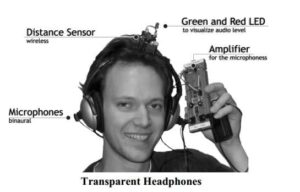The sudden emergence of Hearables as a disruptive wearable technology threatens to relegate hearing aids to the gadget bin. So goes the view in the popular media. That view is formed and informed by characteristic rapid change and constant innovation in the consumer electronics industry.
But, the popular view is not fully informed. Those used to reviewing or knocking out novel electronic gadgetry with short shelf lives may not fully understand or appreciate the small, highly specialized hearing aid industry and the finely-crafted ear level Class I medical devices that can be designated “hearing aids” according to regulatory specifications.
Likewise, the view at Hearing Economics is neither fully formed nor informed. Today’s post commences an effort to bring together different perspectives to gain a more informed view in this column; also to generate probable predictions. Readers are encouraged to contribute and expand the view by sharing their knowledge, experience, and predictions.
New Thinking, Old Problems
Our Big 6 (and the many small hearing aid manufacturers that came before) have spent years, thousands of man hours, and millions of dollars studying and solving a multitude of design challenges, most of which Hearable designers are only beginning to think on.1 Conversely, Hearable designers are thinking on other challenges previously not addressed by our manufacturers.
New thinking from fast track outsiders can’t hurt and it will help. Revisiting old problems and present solutions (e.g., fit, cosmetics, occlusion, power supply, directionality, noise reduction, feature enhancement, music appreciation, and multifunctionality) is bound to usher in welcome innovations. Adding new problems to the mix will ramp up innovation in unexplored areas.
The previous paragraph seems self-evident, even trite. What is less evident and far more important is that all innovations will stand on the shoulders of a century of study and design by psychoacousticians, audio engineers, hardware and software specialists, auditory physiologists, audiologists, and design engineers. Packaging all that previous thinking into consumer-ready Hearables will elude many new designs, such as Intel’s Jarvis2 (feature image) and the contraption in Fig 1. Many ideas, like the Nanoplug, will never get beyond the concept stage; those that do will have to get past the gadget stage; otherwise they’ll end up in the gizmo bin as newer, flashier gadgets replace them.
It’s going to be deja vu all over again for a while in the hearing tech industry. For clinicians, it’s likely to be reminiscent of the discussions audiologists have when attempting to sell and fit hearing aids to electrical engineers.
Hearing Aids Are Not Gadgets
A gadget, according to Wikipedia, is
“a small tool such as a machine that has a particular function, but is often thought of as a novelty. Gadgets are sometimes referred to as gizmos.”
Hearing aids are small machines that have a particular function, but novel they are not. Their “particular function” is to optimize speech understanding in reasonable listening situations,3 a function that most humans consider a necessity rather than a novelty. Further, that function needs to be reasonably constant for most who hope to succeed in learning, working, establishing relationships, and responding to alerts.
I stress “necessity” and “constancy” because those are antonyms of novelty and crucial for successful hearing aid use. QED, hearing aids are not gadgets.
Hearables May be Gadgets, Could be Gizmos
The current crop of Hearables is like other wearables in two key ways: none are used constantly or perceived as necessities by consumers.
People wear them for a little bit and then throw them into a drawer.4
Novel appeal makes Hearables good potential gadgets which can generate short-term sales and spur innovation. But with all the Hearable designs being shopped around and crowd funded, some will fail to make it to market; others will end up nameless, forgotten in the drawer. Those casualties of innovation are gizmos:
gadget(s), especially one(s) whose name the speaker does not know or cannot recall.
Hearables that avoid the gizmo drawer and actually make it as gadgets will usher in a new era of ear-level functionality that appeals to a wide swath of consumers. The economic view is that technological innovation drives Demand: the better and broader the functionality, the more consumer demand, the greater the demand, the more necessary the device, until Hearables will graduate from gadget to a way of life.
That is where the trajectories of Hearing Aids and Hearables will intersect, to the benefit of all involved. For the moment, I think the outsider view expressed by Wired gets it right for our industry :
The secret to making hearing aids more appealing and the cost more palatable is improving the value of the device. … Hearing aid devices are prime for disruption — they are a high-cost single-value product that can and should do so much more. (italics added)
This is the 5th post in the Hearable series. Click here for post 1, post 2, post 3, or post 4.
References and Footnotes
1This post is replete with links to posts previously published at HearingHealthMatters by different editors. Many other posts pertain. When contemplating Hearables, I think it is well worth the considerable time it takes to re-read them and gain an appreciation for the depth and richness of hearing science and the hearing aid industry.
2A CES 2014 review has this to say about Jarvis: “Sadly, Jarvis is just a reference design, meaning its future on the wearable front remains uncertain at the moment. Still the concept is pretty dope.”
3That’s my short-hand definition, but I welcome better definitions from others in the field, please.
4Quote from Scott Pomerantz, chief executive of MC10, a wearable electronics innovation company.






